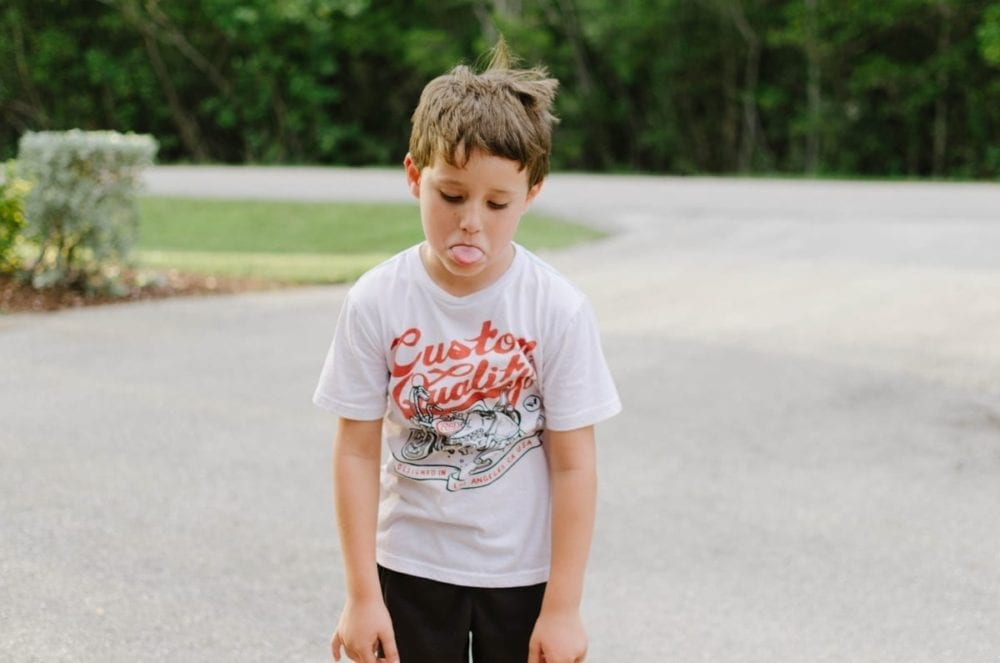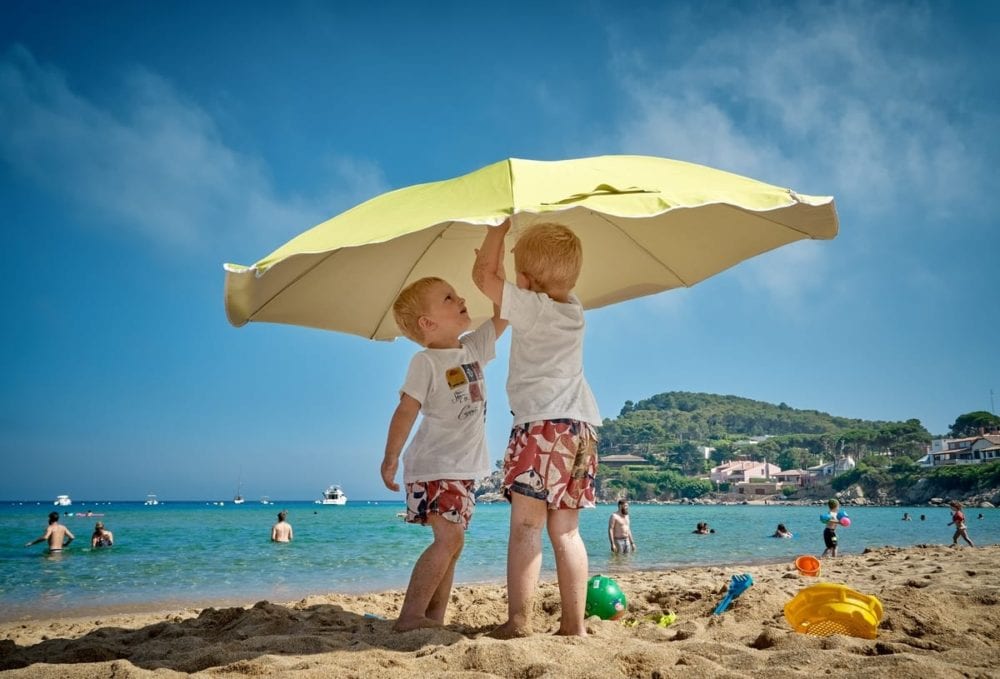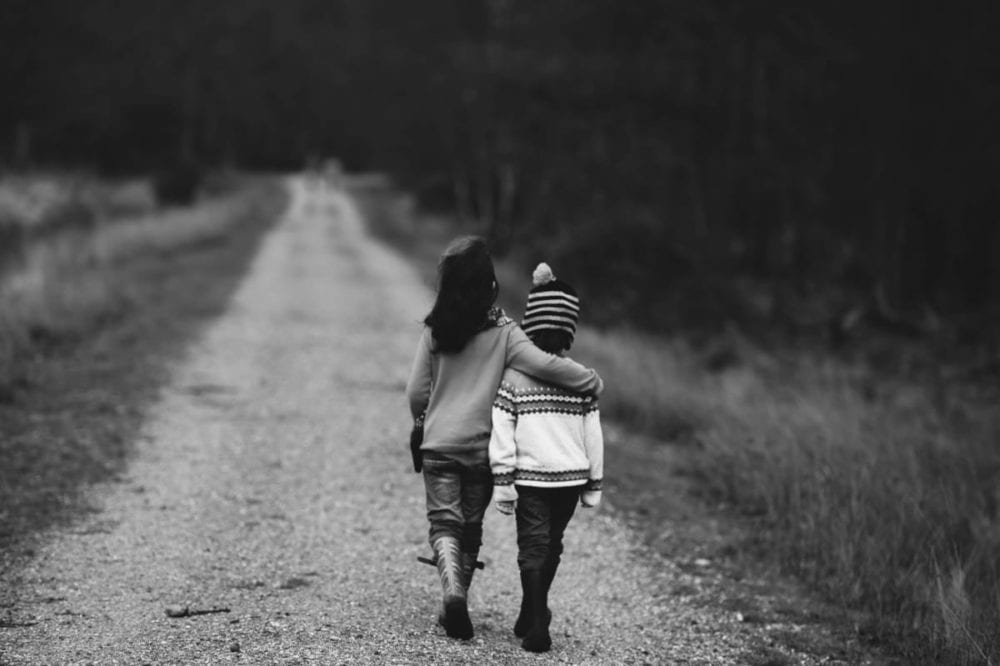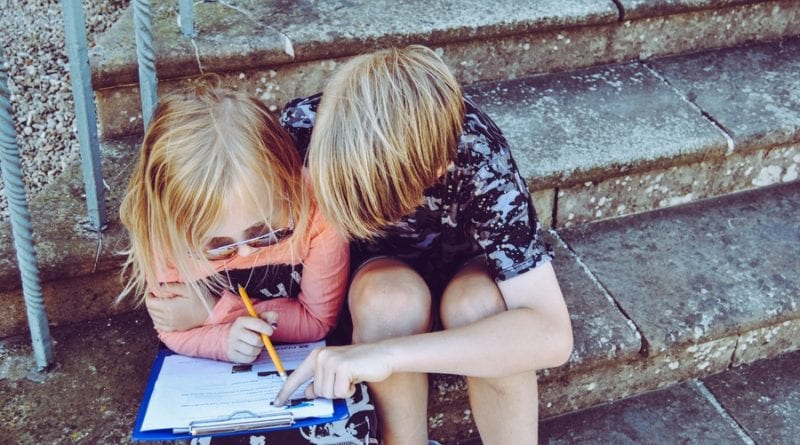How To Teach A Child Respect
 How to teach a child respect isn’t an easy concept to explain to children.
How to teach a child respect isn’t an easy concept to explain to children.
This is because there are so many different personal interpretations of respect.
If you ask one person what respect means they will give you one answer and when you ask another they will give you a totally different explanation.
When you look at the definition of the word respect from Merriam-Webster it states:
Definition of respect:
- a relation or reference to a particular thing or situation remarks having respect to an earlier plan
- an act of giving particular attention: consideration
- a: high or special regard: esteem
b: the quality or state of being esteemed
c: respects plural: expressions of high or special regard or deference paid our respects - particular, detail a good plan in some respects
As you can see the definition leaves a lot to interpretation.
Respect is being held in high regard or esteem but it depends on how you interpret the term to determine how you earn it or how it is shown.
In order to best help the child, we will define respect using language that children can easily understand.
When teaching children the term respect we will be using the definition from one of the most distinguished, prestigious and esteemed authority on the subject.
No, I’m not referring to Yale, Harvard or Stanford. I’m talking about Sesame Street!
Sesame Street uses this definition for Respect:
Treating people in a way that makes them feel cared for and important.
How To Teach A Child Respect
Using this definition, if you respect someone you will take the time and effort to show someone that you respect them.
By respecting them you treat them in a way that makes them understand you care for their feelings and they are important to you.
If this definition doesn’t work for you or your class find an interpretation that fits best for your situation or lesson.
Once you have a concrete way to explain respect it makes it much easier to help guide children to comprehend the term and how to use it.
Start With Self-Respect
Merriam-Webster defines Self- Respect as:
pride and confidence in oneself; a feeling that one is behaving with honor and dignity
While this is a good definition we will continue using the same children’s definition to create our meaning for self-respect.
Our children’s definition of self-respect will be:
Treating yourself in a way that makes you feel cared for and important.
There is an old saying “charity starts at home”
While this might not be a perfect analogy it does make the point that you have to take care of and be nice to yourself first before you are able to do the same for others.
Teaching children to respect themselves first is extremely important.
Doing so lays the foundation for better understanding and implementation of respect for others.
How to teach children self-respect is equally not an easy thing to do.
Although, when parents and teachers use the strategies below it will make teaching the concept much easier.
Teaching Self Respect
Self-respect has a lot to do with how a child feels about themselves.
The best way to ensure that a child holds themselves in high esteem and believes that they are worth being considered important is though proper self-talk.
Self-talk is the internal conversation that a child has with themselves both positively and negatively.
Children are participating in self-talk whether they know it or not.
Giving children strategies to help them during their self-talk will increase the chances that the winner of the internal debate will be on the positive side.
The strategies below will guide children to better self-talk and in turn, will improve the child’s sense of internal importance and self-respect.

1. Negative Beliefs Hurt Self-Respect
One of the quickest ways to lower a child’s belief in their own self-respect is to introduce negative beliefs about the child.
Even worse, is if the child believes that the negative characterization is true and internalizes it they could start making it a part of their belief system.
“I’m not good at school” or “I’m a bad kid” are internal negative beliefs that can only hurt their self-respect.
The longer the child believes that the negative self-talk is true the harder it is to change their self-image and rehabilitate their self-respect.
Children need positive reinforcement and language that is going to encourage children to believe in themselves which builds self-respect.
When they believe in themselves their internal self-talk changes.
They start telling themselves that “I can do it” and ” I am actually good at school”.
When this occurs their self-respect increases and so does their chances for success.
2. What Are The Consequences Of Negative Beliefs
Help children realize that negative beliefs about themselves only hurt them.
When they tell themselves over and over that they are not good at something or can’t do an activity it only sets up a negative metal pattern.
Negative patterns or habits are formed very similarly as positive ones.
You repeat something until it becomes a part of your routine or a mental pattern.
The consequences of such patterns are very limiting to a child.
Reinforce to children that a negative belief system keeps them from doing the things that they want to do.
It stops them from trying new activities and lowers their self-esteem.
Having children realize that negative beliefs do not benefit them and many times the beliefs are not true.
When dealing with negative beliefs or self-talk children should:
- Identify the negative thought
- Determine if the thought is true or just negative self-talk
- If it is not helping, push the negative belief to the side
- Replace it with a more positive attribute.
3. List The Ways The Belief Is False
When a child is participating in negative self-talk or is dwelling on a negative belief many times there is no evidence or merit for this negative thought.
They are letting this negative self-talk to take over which is limiting their abilities.
When in reality, this negative thought is not true and they are holding themselves back without justification.
When a child starts using self-limiting behaviors help the child list or come up with the reasons why the negative thoughts are incorrect.
Many times they will see this is just them being too hard on themselves.
When children start becoming too hard on themselves, help them:
- Make a list of reasons why they can do it
- Prove the negative thoughts are wrong
- Get into a habit of self-regulating negative thoughts
- Help them identify the falseness of negative thoughts.
4. If It’s True How Can We Change It
It is a good idea to teach children not to dismiss all criticism.
If a child is doing something that is legitimately not liked by others and someone tells them about it just dismissing it does not help the child.
If they have gotten into a pattern of behavior that is not liked by others they need to understand how to identify the problem and how to fix it.
If a child says “no one likes me” but is yelling and being mean to people then there is a legitimate reason why the other children don’t want to play with them.
Help children identify if there is a good reason why a negative situation is happening to them.
If no one is playing with them or they are not being picked for class games then they can change the behavior for a more positive outcome.
A child should be encouraged to understand that their behavior or actions can be a major reason why a negative interaction or situation could occur.
When they understand this, they are more likely to take responsibility for their own actions and negative behavior.
Taking responsibility for their own behavior will help them start the internal process of double-checking to see if they were the ones who initiated the negativity.
Once a child has practiced double-checking whether or not a negative thought or limiting belief was a legitimate concern then they can either dismiss the thought or correct it.
Regardless of where the negativity came from, using the strategies discussed above can move children into a more positive mindset.
5. Replace Negative Thoughts
Most of the time a child’s negative thoughts are self-created based off of insecurities or fear.
When a child encounters an illegitimate limiting thought they should replace it with a positive one.
By doing this it will redirect the child to think positive and help them move past what is causing the negative belief in the first place.
Replacing a negative belief with a positive one will also help with confidence.
If the child is dwelling on a negative belief and they have identified it as false they can switch their thinking to a positive belief.
This can help them push through their limitation and as a result build their confidence.
Anytime a child can practice focusing on the positive it will only result in them being more confident.
It can also improve their ability to reduce their negative self-talk.
When children have a good understanding of self-respect it makes it much easier to teach them how to respect others.
Children that are happy with themselves find it much easier to find positive attributes in others.
Once this is discussed and understood, then working on respecting others is the next step in how to teach a child respect.

Then Teach Respecting Others
Now that the child understands the importance of self-respect and has the strategies to help improve their own self-wellbeing it is now a good time to start discussing the importance of respecting others.
When children understand the importance of respect and how earning respect sets them up for success in the future it will make it easier for them to take ownership in learning how to build and create respect on their own.
The strategies below will help make it easier and more efficient to teach children and students respect.
1. Model Respectful Behavior
The very best way for parents, teachers, family members and community leaders to teach respect to children is through modeling.
You can talk until you are blue in the face but one or two respectful actions that a child sees you doing can sum up an hour-long conversation or lesson in one fell swoop.
Children are instinctually better observers than listeners.
This is especially true when they are young.
This is important because the earlier a child experiences what respect looks like though observing it from a parent, teacher or family member the more likely that the child will give and show respect in the future.
When you model respectful behavior and you have made it a priority in your everyday life your child or students will see how to appropriately handle certain situations.
When modeling respect you are harnessing the three main learning styles.
Children can benefit from the Visual, Auditory, and Kinesthetic Learning Styles or VAK.
Many experts believe that modeling expectations are far superior to making rules for children to follow.
While rules are necessary the number of rules that are necessary decrease when a child understands the importance of respect.
Some examples of modeling respect are:
- Using the proper and correct tone of voice regardless of stress level
- Apologizing when wrong
- Going out of your way to help someone, if appropriate
- Respectfully resolving conflict
- Using manners such as thank you and please
- Treat everyone as if they were your friend or family

2. Discuss Disrespect
As a school teacher, one strategy that works well in the classroom and at home to help children understand a concept is using non-examples or examples of what not to do.
Discussing with children what disrespect is and what it looks and sounds like is something that will help them understand what not to do.
Talk to them about how it makes them feel to see someone who is made to feel unimportant or not cared for.
Also, have them discuss how it would make them feel if they were disrespected or made to feel unimportant.
Once they have a personal understanding that disrespectful actions make people feel sad they are less likely to disrespect others.
Have children and students discuss what they would do to change the disrespectful behavior.
Also, ask them how they would make the interaction more respectful.
Giving children an opportunity to practice changing disrespectful behavior into behavior that makes people feel good and cared for is a great way to get children and students to talk about respect.
3. Reward Respectful Behavior
Positive reinforcement is one of the best ways to guide children into behavior that will benefit them in the future.
Positive reinforcement is rewarding a child or student for behavior that a parent or teacher would like to see happen again in the future.
It shows the child that a particular behavior is something that deserves praise and positive attention.
There are many different types of rewards.
A “reward” could be a positive comment, a positive gesture like a hug or a high five or a tangible reward such as a sticker at school or an extra treat at home.
What I see in the classroom is that many times students need an extrinsic or tangible reward in the beginning.
This helps encourage a specific behavior because an intrinsic motivation or internal reason has not yet been established.
Once a student has received many extrinsic rewards the student starts to see a positive pattern and they see themselves as someone deserving of these extrinsic rewards.
Once this occurs, the student starts developing an internal reputation of “I’m good at this or “this is who I am now” and develops an intrinsic motivation to continue the behavior.
This process is started by parents and teachers that reward children for making respectful choices.
Using positive reinforcement works wonderfully when encouraging children to show respect.
Anytime a child or student makes someone feel important or cared for parents and teachers should encourage the child with verbal praise or a tangible reward.
This will help show them that showing respect is worth doing again in the future.
While in the beginning, children may only do it for the “reward” they will eventually see the intrinsic benefits of being respectful to others.
When a child holds the door open for a mother of four, pushing a stroller while trying to get her little ones to an appointment, they will intrinsically understand the power of respect.
They will see the smile of gratitude on that mother’s face.
They will realize that there is not a sticker or toy in the world that anyone can give them that would replace the feeling of joy that helping the struggling mother brings.
This is when the power of respect becomes an intricate part of the child’s life.
The best part is, with each act of kindness shown toward another their own happiness multiplies infinitely.
4. Be Consistent With Expectation
In any type of behavior management system from encouraging respect to classroom behavior should have clear and consistent expectations.
Before starting any expectations for children, parents and teachers must make sure the expectations are clear to themselves first.
This will ensure that when implementing them in their class or to children at home the expectations are well thought out and complete.
Make sure you discuss with the children why the expectations relating to respect are important and how it will benefit them in the future.
One important expectation that should be discussed is how to treat special needs children.
Discussing the importance of treating special needs children with respect should be an intricate part of your classroom and home-based expectations.
Helping children with special needs should be a priority.
Click the link to learn more about how to help children with dyslexia at home.
When setting expectations help children understand:
- Who should be shown respect?
- How can children show respect?
- Why is it important to show respect?
- When should you show respect?
- What showing respect looks like.
- Where should respect be shown?
- Consequences for not showing respect

5. Encourage Keeping Promises
When children don’t keep their promises it shows people that they don’t value them.
It makes them think that they aren’t important.
Even breaking little promises can make people think that they cannot be trusted to follow through.
When we promise something to someone else we are telling them that we will make sure that they are cared for regardless if it is convenient or not.
Many people call this keeping your word.
Keeping your word to another person goes hand in hand with respect.
Remind children to only make promises if they can keep them.
Also, help children understand that depending on their age, they might not have complete control over their schedule and to ask their parents before they commit to something.
This will help them determine if they are able to keep their word and follow through with their promise.
6. Teach Fairness
Teaching children fairness helps them understand that if they are going to treat people with respect being fair is crucial to making people feel important and cared for.
Fairness is an abstract concept that must be discussed in a way that does not confuse children.
This is not an easy thing to teach because most kid’s favorite words are “No” and “Me” which doesn’t mesh well with fairness.
Start with discussing with your child about what fairness means to them.
Talk to them about what it means to treat others in a way that doesn’t provide one person with an advantage over another.
Anytime a parent or teacher models fairness throughout the day children pick up on this behavior.
It raises the likelihood that fairness will continue in the future.
Help children understand fairness by having them practice:
- Taking turns
- Following the rules
- Sharing
- Making sure one person doesn’t have an advantage over another
- Practicing making things equal
7. Advocate Using Kind Words
Children have a way of getting to the point quickly as their main goal is to ensure their needs are being met.
Using kind words and using manners can be a difficult task for children.
This is especially true when they see them as an obstacle to getting what they want.
Many times the reason why people are so impressed with little ones who use their manners is that people instinctually understand the effort it takes for them to say “thank you and please”.
When a child goes through the effort to use kind words they are definitely showing respect.
The old adage of treating people the way you want to be treated goes to the core of respect.
Talking to all people in a calm and friendly manner regardless of their frustration level shows people that they are important enough to go through the effort of being kind.
For young children modeling kind words and manners is crucial.
If a child is not shown examples of how to use their manners and kind words it is easy for them to forgo them.
This is because, as I said before, it is not a natural action for a child to want to add extra words to the process of getting what they want or need.
In their minds, it only slows down the process of getting what they want unless manners and kind words are shown to them on a consistent basis.
Once a child understands that using kind words and manners make people feel cared for and important they will be more likely to make the effort to use them.
They will also find out that when people are made to feel important and cared for they will get what they want more often.
Hopefully, children and students will see this pattern and intrinsically continue kind words and respect on their own.

8. Promote Helpfulness
If respect is making people feel important and cared for then helping someone fits perfectly within that definition.
In the section above about advocating kind words, we talked about the effort it takes for children to use their manners.
If it is difficult for children to use their manners without help then we could surmise that going through the effort of helping others for no other reason than to be helpful could be even more work for kids.
This is where modeling and explaining to children that when you help someone without expecting a reward or praise it is one of the ultimate forms of respect.
Promoting helpfulness not only reinforces respect but it will also help children experience the feeling of joy and happiness that occurs when helping others.
The younger the child experiences this joy the earlier the child can internalize the feeling of happiness and incorporate it into their daily routines.
Helping others also promotes a sense of purpose and satisfaction.
Teaching children helpfulness is a good way to improve:
- Importance of respect
- Promoting joy
- Sense of purpose
- How being helpful to others also helps themselves
- Helping others is worth the effort
9. Urge Children To Be Good Listeners
Teaching children how to be good listeners is probably one of the most underrated skills we teach children today.
We don’t learn while we are talking.
We learn while we are listening.
Helping children and students become great listeners supports building a foundation for an amazing education and encourages them to become lifelong learners.
Being a good listener also shows the person talking respect.
When a student is making a concerted effort to really listen they are helping the speaker feel important and they are showing them respect.
Here are some ways to make your children and students better listeners:
- Look at the person talking
- Come up with a listening position in school and at home (sitting and standing)
- Minimize distraction and focus on the person talking
- Silently interact with the speaker by smiling or nodding
- When instructions are given repeat the directions for clarity before starting the task
10. Support Saying Sorry
One of the hardest things to do for some people is to admit when they are wrong or say their sorry.
When teaching respect to children helping them understand that admitting when you are wrong or saying sorry is one of the biggest ways to show people that they are important to you.
By saying sorry you are showing them that even though it might be difficult or embarrassing they are willing to be uncomfortable in order to show them that they respect the person that has been wronged.
This topic can be difficult for children to understand.
As with most things, modeling being apologetic is one of the best ways for a child to comprehend such a deep topic.
This is due to the fact that a child’s main goal when it comes to emotions, is to minimize the feelings of being embarrassed or unconformable.
Asking a child to be uncomfortable in order for another to feel cared for is sometimes a hard thing for a child to grasp.
With practice and the right modeling, children will understand that saying sorry not only shows respect but it also helps them feel better about themselves.
This inevitably leads to building self-respect and the importance of an apology.

Why Is Respect Important?
Respect is one of the most important social skills a child will learn.
The earlier children learn what respect is the sooner they will be on the path to success.
Respect has many forms.
This includes self-respect, respecting others, respect for authority and many other examples.
One of the main benefits of teaching children respect is that they start to understand that who they are as a person and their feelings should be valued.
It is also extremely important for them to understand that their actions and how they treat people will also affect if someone respects them in return.
When respect is taught in the classroom or in the home it creates a sense of safety.
The safe feeling occurs when children know that the people around them will make them feel cared for and important.
When respect is given children will feel more comfortable taking risks and challenging themselves because they know their feeling will not be taken for granted.
Respect is also important because it helps teach a child to have an open mind.
When you respect someone you listen to what the other person is saying.
While you might not agree with what the person is saying, if you respect them, you will try to see it from their perspective so that they know you care for them.
When this is done enough times children will see that there is not just one way to interpret something.
They will start to see different perspectives and they are more likely to keep an open mind when hearing other people’s opinions or how to handle certain situations.
This also leads to building tolerance for others.
If other people can have different points of view and the child still respects them then it opens up the thought process that others can be different in other ways and it is still OK.
When children learn to respect people regardless of their views or how they are different it starts them on the path to understanding other equally important social skills such as empathy and tolerance.
Teaching children how to respect themselves and others as soon as possible is a great way to encourage good choices and gets them closer to success as they get older.
Discuss Respecting Authority
“Most” children have an unconscious understanding that they need to respect their parents, grandparents and other adult family members.
Most of the time the adults in the family will model respect and in turn, the child learns to respect them back.
This then trickles down into other subsections of their community like teachers, police officers and coaches.
Unfortunately, if this pattern is not modeled to the child at an early age or at least discussed with them frequently the trickle-down effect does not occur.
This leads to many problems that are community-related.
Respecting your elders and the people that are trying to help them is an important lesson for children to learn.
When children respect their family members, teachers, law enforcement and other authority figures they will see that many times those people will show respect back to them in return.
This starts a positive pattern and mutual respect between the child and the authority figure can form.
In addition, if the parent reinforces the importance of respecting and listening to those authority figures children will develop a positive connection with their community members.
Many times a child will benefit from that connection because teachers, coaches and other community figures have many beneficial lessons to teach.
Although, I also think it is important to teach children that it is OK to question unknown authority figures but in a respectful manner.
Blindly following someone’s directions because a child believes that they must in order to show respect can also lead to problems.
Teaching children how to properly address an adult that is not treating them appropriately is something that should also be discussed.
Each family must sit down and define for their children what they believe is right and how children will practice being respectful.
The biggest point here is that families must get together and discuss important matters such as respect and how to show it.
If families don’t, then their children will learn it somewhere else and that may or may not be a good thing.




